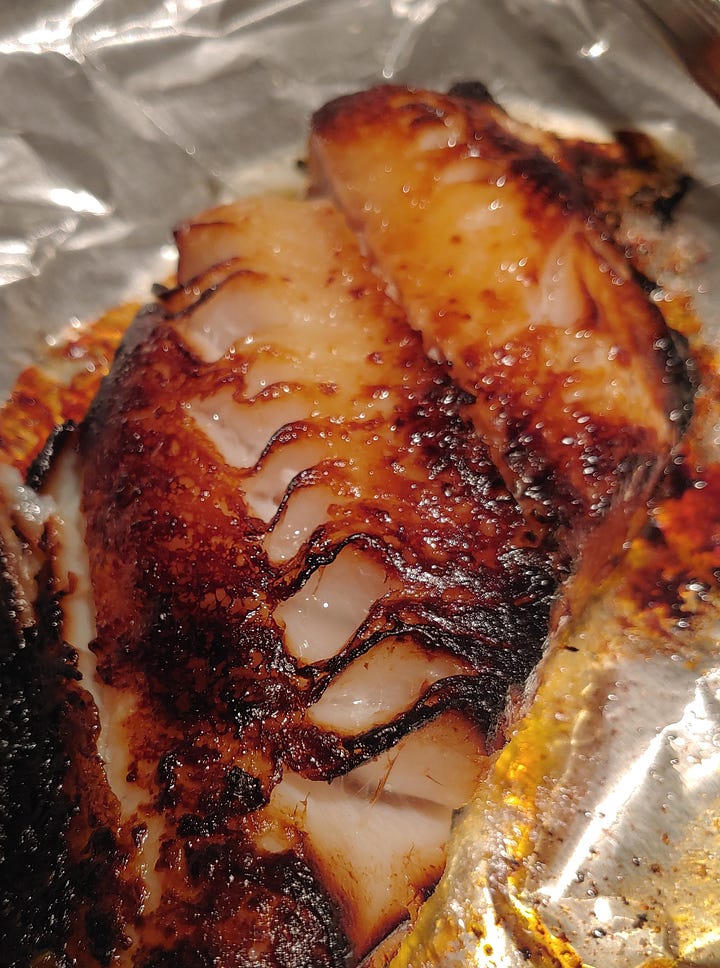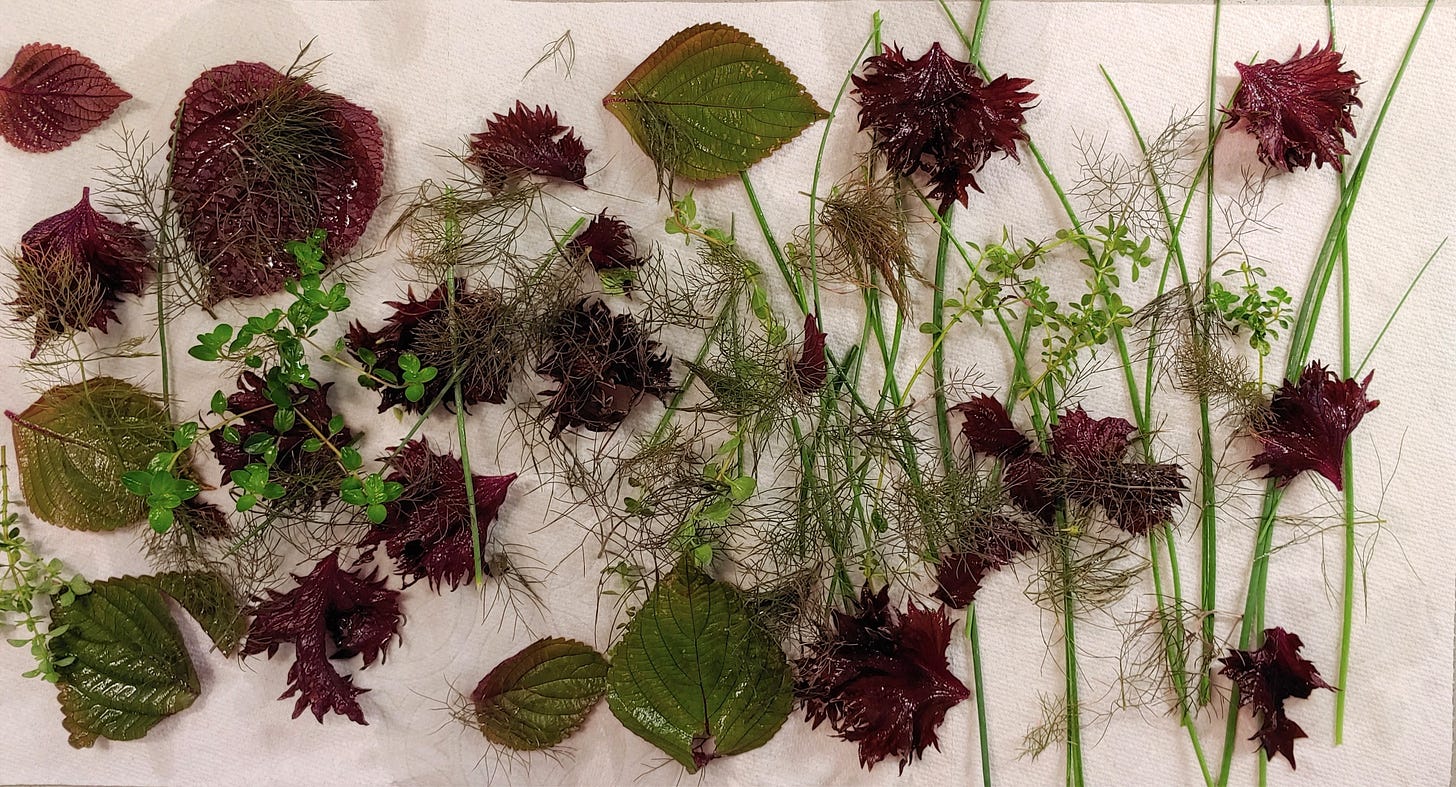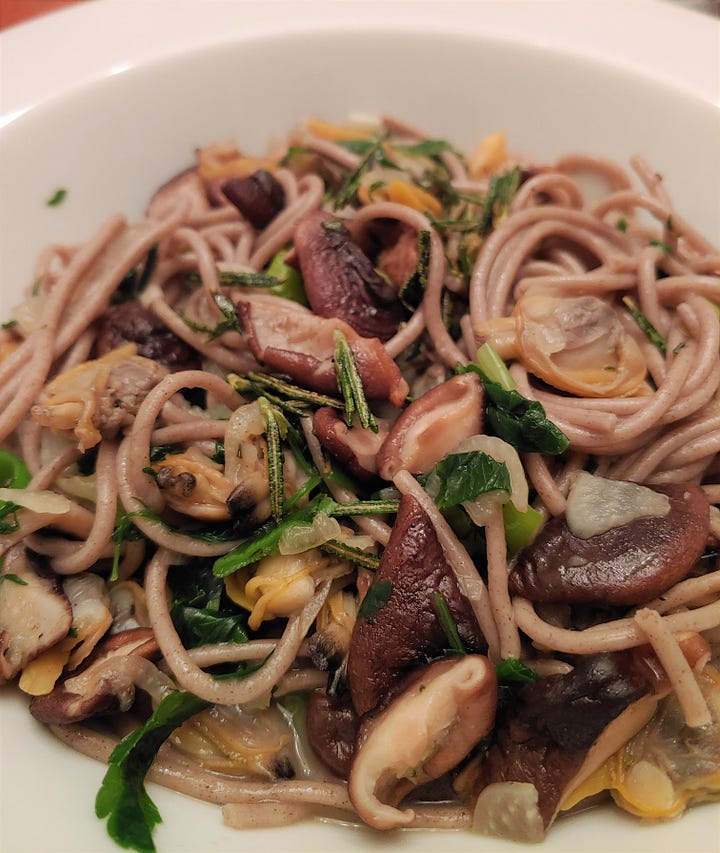I apologize to anyone who may have been waiting with baited breath for the next installment from me. I won’t bore you with the various details behind the pause of recent weeks. There has been a certain amount of regrouping going on, plus creation of a new graphic for Seafood Savvy! I apparently took February off, returning now with a new plan of aiming for (at least) once a month rather than every two weeks. The structure of every-other-Wednesday was proving challenging. You may hear from me other times, too, as the muse hits. Bonus editions may be just a recipe or notes from a particularly fabulous meal or sharing pictures from an adventure I’m on. Timing may not be predictable, but I hope the content proves interesting enough to play along with me…
I’d love to have a dollar for every time in the past few decades that I’ve written or said something about seafood being the ultimate fast food: a prime option for getting dinner on the table in no time at all, the meal you can throw together more quickly than the pizza will be delivered. Count me among many who have touted the convenience and ease of cooking seafood.
Because most seafood cooks pretty quickly, unless you’ve got a large whole fish or an elaborate recipe in mind you can generally have dinner on the table in (sometimes well) under 30 minutes. Fish fillets to pan-fry or bake, shrimp to sauté, clams or mussels to steam. Quick, yes. Easy preparations, sure, with plenty of room for variation to suit different tastes. But even those options are still more involved than what many might consider a really convenient dinner option.
Enter the fish stick. I couldn’t tell you the last time—prior to a few months ago—that I had eaten a fish stick. It took reading Nigella Lawson’s Cook, Eat, Repeat to reintroduce me to this stalwart of the freezer aisle. She reflects on “that English comfort-food classic” of a fish stick sandwich made on traditional store-bought bread—upgraded by making it with her Old-Fashioned Sandwich Loaf recipe in the book. Lawson also includes a recipe for Fish Stick Bhorta, adding the oven-crisped fish pieces to sautéed onions with chiles, garlic, ginger, and spinach. So now I’ve also been nudged to contemplate ways that I might incorporate fish sticks into a recipe. Convenience inspiring creativity. Maybe you’ll see some version of that in an upcoming issue one of these days.
My husband was surprised, and delighted, that first evening I served fish sticks for dinner. What’s not to love about strips of mild fish fillets enclosed in a light, crisp coating? It definitely took me back to school lunch trays of days gone by. I trust that a bag will most always be on hand in the freezer from now on. I’m liking the Trident brand, made with Alaska pollock and a particularly light breading. Many other fish stick packages I’ve see when traipsing around the web also note being made with wild-caught Alaska pollock, a fishery that’s certified sustainable by the Marine Stewardship Council. So it’s an easy dinner choice that’s a responsible one as well.
Convenience can also be found in the fresh case at the market—ready-to-cook salmon burgers, crab cakes, or marinated fish perhaps. At the venerable Seattle seafood market, Mutual Fish, I recently picked up their signature kasu black cod—the fish in a marinade based on sake lees. It requires just 8 to 10 minutes to cook, time enough to sauté some vegetables to serve alongside. A more expensive and richly-flavored example of seafood convenience, among the spectrum of options.
Regarding that retail case, I saw an item from Supermarket News recently encouraging seafood retailers to think more about convenience with their offerings—to help boost sales that have lagged a bit after a big increase in seafood shopping early in the pandemic. And they talk of convenience not just with dinner in mind, but considering snacking, too, in the context of both ready-to-eat snacks and items ready-to-cook with midday nosh in mind instead of dinner. As a fan of savory snacks who wrote a whole book about them, I can definitely get behind emphasizing seafood as a snack option.
From snacking to quick Tuesday night dinner to something more elegant, seafood’s a great option for convenience. I dove into some particulars of frozen and tinned seafoods in this earlier edition, for more discussion on the convenience theme if you missed it.


In the Kitchen: All the Herbs
It might have been a tie between citrus and herbs, in terms of ingredients I most often wanted to add to recipes while I was dreaming up the collection for Shellfish. I did a little ingredient inventory of the recipes I’d drafted about halfway through to make sure I wasn’t going overboard with lemon and grapefruit, basil and chives, et al. Though it said a lot for those being among prime items to have on hand for impromptu seafood cooking.

There’s good reason herbs are so high on the go-with list for seafood, their bright, aromatic character such an ideal complement to the briny-sweet, often relatively light flavor profiles of seafood. One simple example of their quick and vivid boost is a recipe from a class I taught in Sun Valley in January, Herb-Marinated Shrimp from my Gourmet Game Night book. Peeled shrimp are simmered to cook through, then tossed while still warm with a mixture of oil, vinegar, and a generous amount of chopped herbs (a mix of tender herbs is great here). After they chill for an hour or two, you have flavorful, lightly marinated shrimp ideal for a snack, served on a salad, on a crostini, any number of uses. For that particular recipe I serve the shrimp with a cocktail onion tucked in the curved nook of each shrimp, the two skewered together on a small pick—perfect no-mess finger food for game night.
The character of individual herbs is great to showcase too. It works best with simpler preparations, when the distinct flavors of the herb and the seafood are prominent. One example is Grilled Clam Pouches with Bay Leaf and Butter. Three ingredients, a piece of foil, and some heat (they can be cooked in the oven, too). Which gives me an excuse to expound on the virtues of fresh bay leaf. I’ve had the same bay plant since the mid 1990s, purchased in a 4-inch pot to test a recipe for bay leaf crème brûlée from Jerry Traunfeld at the Herbfarm (the recipe is in that link). Now the small tree has outgrown its latest of many pots and soon to be transplanted in the ground, which I hope won’t break my streak. I’m a very laissez-faire gardener, if I can keep a bay plant alive that long, I am pretty sure anyone can. Lacking fresh bay (dried wouldn’t do), that clam prep can be done with fresh rosemary or thyme sprigs. The steamy results when those packets are opened—just so aromatic and delicious.

With sturdier herbs such as rosemary and sage, cooking makes them more palatable in whole form, the crispness they take on is an extra delight. And the cooking can have amplified benefit, too. One thing I’ve come to love doing is cooking these sturdy herbs in butter as a primary step. That butter they’ve cooked in becomes infused with herbal flavor, while also having gotten a bit nutty-brown in the process. That’s how I started a recipe for sautéed shrimp with garlic in Shellfish. And how I started a cracker recipe in Salty Snacks, the crisp rosemary chopped to add to the dough along with the rosemary-infused brown butter. Layers of flavor, another dimension of cooking with herbs.
I’m grateful that in my little garden I manage to have a number of herbs at hand, seeing now early shoots of the chives and bronze fennel coming up in this final phase of winter. Rosemary, sage, thyme, and that bay are among my year-round supply. I’ll add starts of other herbs in a couple months, to draw from through summer and fall. It gives me endless delight to be able to pop outside and snip some of these herbs, adding bright character to seafood dishes of all kinds in no time flat.
Out and About
It’s been a few years since I’ve been to a seafood festival, but I’m starting to add a bunch of options to my calendar over the coming months. Sadly we have other plans the weekend of March 17-19, but that’s when seafood fans will be converging on Ocean Shores, Washington, for the Razor Clam and Seafood Festival. I attended last in 2019, doing a cooking demonstration of razor clams pan seared with mushrooms (chanterelles, when available) and brown butter (again with the butter!! that’s me). The festival now partners with the longtime Dungeness Crab & Seafood Festival that’s held in Port Angeles each October, adding a dose of Dungeness to these Ocean Shores festivities too. There’s a crab dinner held each evening, with advance tickets available to secure your spot.
Is there a great seafood festival you’ve been to in recent years? The kind of gathering that infuses seafood culture, displays, demonstrations, crafts, activities, etc. into the schedule? Maybe a seafoody parade, some open-mic fisher-poetry readings? I’d love to hear about it in the comments below, for my own calendar’s consideration, and for potentially sharing in a future issue.
I mentioned one of my long-time favorites a few issues back, the OysterFest in Shelton, Washington, which celebrated its 40th year this past October. I attended many times years back, judging the seafood cook-off, eating my fill of grilled oysters, and watching the very serious business of professional oyster shucking championships (the winner goes on to the national contest in Maryland). While not every piece of food available is seafood, by far oysters and other seafoods are a major theme. I realize not all festivals can tout a hallmark element like championship oyster shucking, but I hope to share with seafood lovers those kind of festivals that offer an array of seafood-focused experiences.
In the Kitchen: The Joy of Leftover Clams
I taught an online class featuring shellfish a couple weeks ago for Milk Street Kitchen. While my husband and I did an admirable job of enjoying the steamed clams and pan-fried oysters I’d prepared for the class, there was a good amount of leftover steamed clams. Not to mention a pound or so of clams I hadn’t yet cooked, which I steamed open too. After plucking the clams from their shells, I put them in a bowl with the cooking liquids—this version extra delicious having started with sautéing shallots in a bit of butter, then a generous amount of fresh herbs added while steaming.
This served as a particularly tasty start for dinner the next night. Echoing the theme of herbs above, I sautéed a sprig of fresh rosemary in a bit of butter until aromatic and crisp, then lifted it out. Some leeks and shiitake mushrooms I had in the fridge were sliced and sautéed in that rosemary-infused butter, then the clams with their herby cooking liquids added just to warm up. I then added cooked soba noodles to the pan, gently tossed to intermingle with the clams and to warm through…then into shallow bowls for serving. Without forgetting to sprinkle the buttery-crisp rosemary leaves over. A versatile framework that should work well other leftover seafood, too, adding some shellfish stock if no reserved cooking liquids on hand. I know I’m likely to plan for recreating that same leftover scenario another day soon.







Great article. We keep Ian’s GF fish sticks in the freezer. Buy them at PCC
https://target.scene7.com/is/image/Target/GUEST_5f8d003c-75e8-4db7-8e5e-dede24facbb6?wid=445&hei=445&qlt=80&fmt=pjpeg